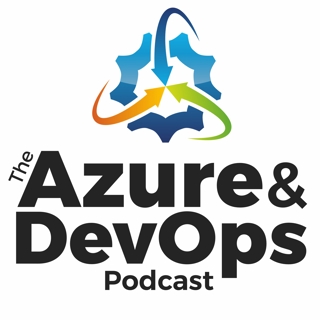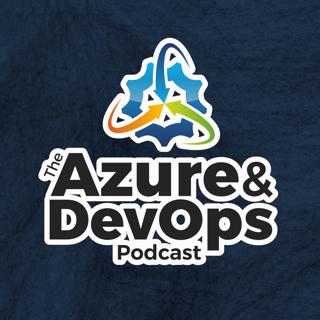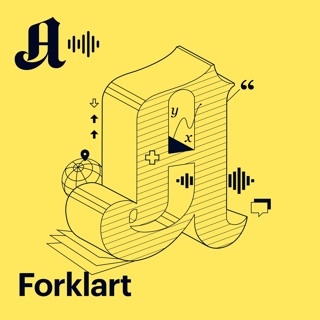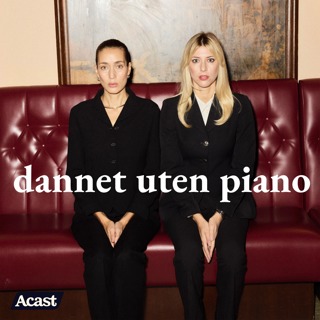
Richard Hundhausen on Professional Scrum - Episode 100
In today’s episode, Jeffrey is joined by a good friend and incredible software engineer and trainer, Richard Hundhausen. Richard helps software organizations and teams deliver better products by understanding and leveraging Azure DevOps and Scrum. He is a Professional Scrum Trainer, Professional Scrum Developer, author of Professional Scrum with Azure DevOps (MS Press), and co-creator of the Nexus Scaled Scrum framework. As a software developer and consultant with over 30 years of experience, he understands that software is built and delivered by people and not by processes or tools. In their conversation today, Richard outlines what Scrum now looks like in 2020, what the roles look like, clears up misconceptions, offers tips to Scrum teams both new and old, and shares some advice on how Scrum teams can best adapt to changes in technology. Topics of Discussion: [:38] Be sure to visit AzureDevOps.Show for past episodes and show notes. [:46] About The Azure DevOps Podcast and Jeffrey’s offer to speak at virtual user groups. [1:30] About today’s episode with Richard Hundhausen. [2:15] Jeffrey welcomes Richard to the podcast. [2:50] Richard shares about his background and how he first got into software engineering and training. [6:04] Richard speaks on software lifecycle development and management. [8:08] About the newest book Richard is working on; a follow-up to Professional Scrum Development. [11:08] Richard gives an update on the current Scrum guide; i.e. what is Scrum in 2020. [14:52] For an organization that wants short cycle times all the way through to production, does Scrum as it exists in 2020, work? [16:59] If someone adopted a flow model, does that mean that they wouldn’t be doing Scrum? Or does Scrum fit nicely with a flow model as well? [18:57] In modern Scrum, are there still roles? And if so, what are they? [22:10] A word from Azure DevOps Podcast’s sponsor: Clear Measure. [24:49] Richard clears up some Scrum misconceptions; explains why Scrum is a framework, not a process; and offers tips to new Scrum teams. [30:42] How new tech fits into modern Scrum and how teams can best adapt to these changes in technology. [34:43] Does the latest Scrum guide specify that you do estimating or is ‘estimating’ a distant relic? [42:27] When will the 2020 Scrum guide come out? [43:10] Jeffrey thanks Richard for joining the podcast. Mentioned in this Episode: Azure DevOps Clear Measure (Sponsor) .NET DevOps for Azure: A Developer's Guide to DevOps Architecture the Right Way, by Jeffrey Palermo — Available on Amazon! bit.ly/dotnetdevopsebook — Click here to download the .NET DevOps for Azure ebook! Jeffrey Palermo’s Youtube Jeffrey Palermo’s Twitter — Follow to stay informed about future events! The Azure DevOps Podcast’s Twitter: @AzureDevOpsShow ActionableAgile Kanban Guide for Scrum Teams (Scrum.org) Professional Scrum Development with Microsoft Visual Studio 2012 (Developer Reference), by Richard Hundhausen Affinity Estimating Planning Poker Want to Learn More? Visit AzureDevOps.Show for show notes and additional episodes.
3 Aug 202043min

Joe Duffy on Infrastructure as Code - Episode 99
This week’s guest is Joe Duffy, the CEO of Pulumi — a venture-backed startup in Seattle whose mission is to help developers and operators get their code to the cloud faster together. Prior to founding and leading Pulumi, Joe worked for Microsoft for a number of years helping them take .NET to open source. Currently, his main focuses are on Infrastructure as Code and Cloud Engineering. In this episode, Jeffrey and Joe take a deep dive into Infrastructure as Code. As someone who has been pouring his brain into the problems around IaC, Joe shares what he has learned about IaC, how Pulumi resolves some of these problems, and how you can get started with Pulumi today. Topics of Discussion: [:38] Be sure to visit AzureDevOps.Show for past episodes and show notes. [:48] About The Azure DevOps Podcast and Jeffrey’s offer to speak at virtual user groups. [1:27] About today’s episode with Joe Duffy! [1:46] Jeffrey welcomes Joe to the podcast. [1:50] Joe shares his experience at Microsoft when .NET first became open source. [3:50] Jeffrey and Joe reflect on the history of using .NET with the Macbook. [6:05] Joe shares what he has learned about Infrastructure as Code throughout his career and the approach they took with solving the problem with Pulumi. [9:09] How does Pulumi solve specific problems better than Azure ARM? [11:53] Joe shares how he thinks about the different levels in Infrastructure as Code (which gets at the heart of how infrastructure teams and developers work together.) [14:55] Joe dives into the Pulumi approach and what solutions they integrate with. [16:26] Joe shares the solution they offer to developers who are looking to do standard things. [19:07] A word from Azure DevOps Podcast’s sponsor: Clear Measure. [19:32] How does Pulumi solve the problem of developers who have to do it all (i.e. both the developer and infrastructure side)? [22:08] From an architecture perspective, what does Joe think is the best infrastructure to pick? [24:18] Joe shares how they have approached the issue of database migration with Pulumi. [27:42] Joe discusses changing a setting on your app service after deploying your application vs. the other problem of ‘I’m not actually changing my code, but I need to change the setting.’ [30:24] With DevOps now 10 years old, does Joe believe that the current state of the industry is where it will continue to live, or does he see another sea change coming? [32:03] Joe breaks down the paid tiers in Pulumi. [33:42] How Joe recommends getting started with Pulumi. [35:18] Is there a way to debug and use desktop emulators locally? [36:26] Jeffrey thanks Joe for joining the podcast! Mentioned in this Episode: Azure DevOps Clear Measure (Sponsor) .NET DevOps for Azure: A Developer's Guide to DevOps Architecture the Right Way, by Jeffrey Palermo — Available on Amazon! bit.ly/dotnetdevopsebook — Click here to download the .NET DevOps for Azure ebook! Jeffrey Palermo’s Youtube Jeffrey Palermo’s Twitter — Follow to stay informed about future events! The Azure DevOps Podcast’s Twitter: @AzureDevOpsShow What is Infrastructure as Code? Joe Duffy’s LinkedIn Joe Duffy’s Blog Pulumi GitHub.com/Pulumi/TF2Pulumi Azure ARM JSON NuGetTerraform Chef Puppet Akka.NET Microsoft Orleans Kubernetes Pulumi — Get Started Pulumi Slack Channel Want to Learn More? Visit AzureDevOps.Show for show notes and additional episodes.
27 Jul 202037min

Jimmy Bogard on AutoMapper and MediatR - Episode 98
Joining Jeffrey today is Jimmy Bogard, an Independent Consultant, long-time Microsoft MVP award recipient, C# guru, and author and maintainer of AutoMapper (as well as many other open-source projects!) He has twenty years of experience building mission-critical applications and distributed systems with extensive experience in Agile, Test-Driven Development, Domain-Driven Design, Object-Oriented Design, Service Oriented, and Distributed Systems. Jimmy’s convention-based object-object mapper, AutoMapper, is used by tons of teams everywhere and has over 14 million downloads on NuGet. In this episode, Jimmy speaks about the genesis of AutoMapper, how it has evolved over time, shares about his career journey, speaks about MediatR, and gives his thoughts on Blazor and beyond. Topics of Discussion: [:38] Be sure to visit AzureDevOps.Show for past episodes and show notes. [:48] About The Azure DevOps Podcast and Jeffrey’s offer to speak at virtual user groups. [1:31] About today’s episode with Jimmy Bogard! [1:50] Jeffrey welcomes Jimmy to the show! [2:15] Jimmy gives a rundown of his career. [3:12] Jimmy shares his thoughts around consulting and what he misses about it. [5:15] Jimmy tells the story of how AutoMapper got started. [8:30] Jimmy gives some advice for those who have not used AutoMapper before. [12:43] Jimmy speaks about the refactoring of the original AutoMapper interface to a top-level interface. [14:51] With AutoMapper now going on 13 years old, what would Jimmy say are its main strengths? What does he always reach for it? And what uses does he advise against using it with/for? [17:37] A word from Azure DevOps Podcast’s sponsor: Clear Measure. [18:04] Jimmy shares some background about MediatR and how it got started! [20:07] What MediatR started out as and how it developed over time. [21:13] Jimmy shares about the practical uses of MediatR and why someone would want to use it. [25:32] How the MediatR library makes it easy to codify everything your application does as a command, query, or event. [26:24] Jeffrey and Jimmy discuss how to think about what’s complex for developers. [28:32] Side effect of using the MediatR library: telemetry. [30:26] Jimmy’s thoughts on Blazor and beyond! [37:55] How to follow-up with Jimmy and find him online! Mentioned in this Episode: Azure DevOps Clear Measure (Sponsor) .NET DevOps for Azure: A Developer's Guide to DevOps Architecture the Right Way, by Jeffrey Palermo — Available on Amazon! bit.ly/dotnetdevopsebook — Click here to download the .NET DevOps for Azure ebook! Jeffrey Palermo’s Youtube Jeffrey Palermo’s Twitter — Follow to stay informed about future events! The Azure DevOps Podcast’s Twitter: @AzureDevOpsShow Jimmy’s Blog: JimmyBogard.com Jimmy’s Twitter @JBogard Github.com/JBogard AutoMapper AutoMapper on NuGet MediatR Blazor JSON StructureMap ASP.NET Core Angular React Vue Microsoft’s MAUI Project Microsoft Silverlight Want to Learn More? Visit AzureDevOps.Show for show notes and additional episodes.
20 Jul 202039min

Danny Vandergriff on Empowering Developers - Episode 97
This week on the podcast, Jeffrey is joined by Danny Vandergriff! Danny is a Principal DevOps Architect at Clear Measure, designing DevOps solutions for clients in a variety of industries. He's also done a tremendous amount of work in the area of database administration for large and complex SQL Server databases. In this episode, Danny discusses both the Dev and the Ops of DevOps! He gives advice to developers new and old to the industry; tips around designing and implementing SQL databases for business applications; his thoughts regarding disaster recovery, availability, and managing different regions in Azure SQL; recommendations for what processes .NET developers should be looking at when load testing their applications; and his thoughts on Kubernetes, TeamCity, and more! Topics of Discussion: [:38] Be sure to visit AzureDevOps.Show for past episodes and show notes. [1:01] About the recent Microsoft Build Conference and The Azure DevOps Podcast. [1:30] About today’s episode with Danny Vandergriff! [1:48] Jeffrey welcomes Danny to the show! [1:57] Danny shares his career background as well as his motivation for getting into the software industry in the first place! [2:56] Jeffrey and Danny do a synthesis of Dev and Ops. [5:10] Danny shares what he has learned from designing and implementing SQL databases for business applications. [6:38] If developers are starting new applications today, is it more common to put the database on a VM or to use the Azure SQL service? [8:43] Danny gives a rundown of the concepts that you do not have to think about with Azure SQL. [9:31] Danny explains the concept of DTU; database transaction unit. [10:26] Is there any way to autoscale the DTUs like in App Service? [10:52] Danny shares how he thinks about disaster recovery, availability, and managing different regions in Azure SQL. [11:58] A word from Azure DevOps Podcast’s sponsor: Clear Measure. [12:22] Jeffrey shares some quick announcements. [14:12] Danny’s recommendations for what process .NET developers should be looking at for load testing their applications. [15:44] Danny’s go-to recommendations for developers getting started with load testing for the first time. [17:24] Regarding new applications, until they have been formally load tested or used in a fully loaded production environment, it doesn’t scale. Is this correct? [18:28] Danny speaks about the landscape regarding build and deploy tools today and how he thinks about the different approaches. [20:10] The current state of .NET applications and Kubernetes. [21:48] Danny shares his thoughts about TeamCity. [23:23] Danny speaks about the tools and methods people should be thinking about when monitoring and supporting the applications running in production. [25:11] Danny’s favorites when it comes to starting a new application. [29:49] Danny provides his final pieces of advice for developers. Mentioned in this Episode: Azure DevOps Clear Measure (Sponsor) .NET DevOps for Azure: A Developer's Guide to DevOps Architecture the Right Way, by Jeffrey Palermo — Available on Amazon! bit.ly/dotnetdevopsebook — Click here to download the .NET DevOps for Azure ebook! Jeffrey Palermo’s Youtube Jeffrey Palermo’s Twitter — Follow to stay informed about future events! Jeffrey@Clear-Measure.com — Email Jeffrey for a free 30-point DevOps inspection (regularly priced at $5000!) — Spaces are limited! The Azure DevOps Podcast’s Twitter: @AzureDevOpsShow BlazeMeter JMeter Kubernetes TeamCity New Relic Datadog Want to Learn More? Visit AzureDevOps.Show for show notes and additional episodes.
13 Jul 202029min

Simon Brown on Architecture for Developers - Episode 96
In today’s episode, Jeffrey Palermo is speaking with Simon Brown! Simon is the author of Software Architecture for Developers; a developer-friendly guide to software architecture, technical leadership, and the balance with agility. Simon is also the creator of the C4 software architecture model and the founder of Structurizr; a collection of tools to help software teams visualize, document, and explore their software architecture. In their discussion today, they will take a look at architecture for developers. The topic of architecture is something that all developers need to know about, and there is no better guest than Simon Brown to discuss all things architecture! He shares his experience with practical architecture for developers, his advice on how developers that are new to the industry should begin thinking about architecture, how a development team should go about designating someone for the architect role, and shares some additional resources to explore on the topic of architecture! Simon also gives a rundown of C4, his software architecture model, and Structurizr, his collection of lightweight developer tools. Topics of Discussion: [:38] Be sure to visit AzureDevOps.Show for past episodes and show notes. [1:22] About the recent Microsoft Build Conference and The Azure DevOps Podcast. [1:44] About today’s episode with Simon Brown! [2:14] Jeffrey welcomes Simon to the show! [2:35] Simon speaks about his background and what led to what he’s currently doing. [3:38] How would Simon encourage developers that are relatively new to the industry to think about architecture? [6:05] Regardless of what the architect role is called, there should always be someone on the team with a wider perspective on the project or goals. [6:38] As someone who has coached a lot of people through this, what would Simon say is the right approach to getting started with architecture? [7:41] How does diagramming fit into architecture? [9:24] Simon shares why he created C4 (a software architecture model) and why developers should be using it! [11:48] Contrasting Simon’s C4, Jeffrey and Simon discuss the 4+1 architectural view model. [14:10] A word from Azure DevOps Podcast’s sponsor: Clear Measure. [14:37] Jeffrey shares some quick announcements. [16:26] Simon discourages developers from installing Viseo, and offers an alternative. [19:03] If general-purpose diagramming tools are not good for software architecture, what does Simon recommend? [20:32] Simon speaks about the essence of his Structurizr tooling: lightweight developer tools that are developer-friendly. [21:47] The stored format of the different views/diagrams is text and therefore would naturally go into the source control repository. So, what does Simon see when he looks in the source control? [22:58] Simon gives a rundown of what context diagrams, containers, components, and classes are, and when developers should be doing those things. [29:16] Simon answers the question, “Should we treat our assemblies as containers?” [29:41] Simon mentioned that, at the class diagram level, you should not do it by hand. Was he alluding to the fact that there are some generators that he likes to use to generate it? When’s the last time he actually did that level? [31:09] For developer teams that are struggling with how to organize themselves, what does Simon recommend regarding how to designate the architect role? How does Simon coach his clients on this? [34:54] For those who want to learn more, which resources does Simon recommend listeners to check out after listening to this podcast? [37:02] Jeffrey thanks Simon for joining the podcast! Mentioned in this Episode: Azure DevOps Clear Measure (Sponsor) .NET DevOps for Azure: A Developer's Guide to DevOps Architecture the Right Way, by Jeffrey Palermo — Available on Amazon! bit.ly/dotnetdevopsebook — Click here to download the .NET DevOps for Azure ebook! Jeffrey Palermo’s Youtube Jeffrey Palermo’s Twitter — Follow to stay informed about future events! Jeffrey@Clear-Measure.com — Email Jeffrey for a free 30-point DevOps inspection (regularly priced at $5000!) — Spaces are limited! The Azure DevOps Podcast’s Twitter: @AzureDevOpsShow SimonBrown.je Software Architecture for Developers: Technical Leadership and the Balance with Agility, by Simon Brown Structurizr.com Simon’s Twitter: @SimonBrown The Agile Manifesto C4Model.com Want to Learn More? Visit AzureDevOps.Show for show notes and additional episodes.
6 Jul 202035min

Chris Patterson on GitHub Actions - Episode 95
Joining the podcast today is Chris Patterson! Chris is the Staff Product Manager for GitHub Actions at GitHub. He has been in the software industry for more than 20 years. In that time, he has worked on a variety of projects at companies ranging from startups to telecom. Prior to coming to GitHub, he spent 14 years as a Principal Program Manager on Azure DevOps at Microsoft. In this episode, Jeffrey and Chris take a deep dive into GitHub Actions. Chris gives an update on everything new going on with GitHub and GitHub Actions both from a personal perspective and from the recent announcements that were made at the Microsoft Build and GitHub Satellite conferences. Chris also shares some information regarding GitHub Enterprise Server and what the future roadmap is looking like for GitHub Actions! Topics of Discussion: [:38] Be sure to visit AzureDevOps.Show for past episodes and show notes. [:48] About the recent Microsoft Build Conference and The Azure DevOps Podcast. [1:55] About today’s episode with Chris Patterson! [2:23] Jeffrey welcomes Chris to the show! [2:42] Chris speaks about his current role at GitHub. [4:00] How separate is GitHub from Microsoft? Or would Chris consider them more integrated? [5:50] Chris compares the model to that of Microsoft’s acquisition of LinkedIn. [7:08] What Chris loves the most about working for GitHub. [7:46] How many time zones does Chris work across? [8:16] Is most of their team still in the pacific time zone or is it pretty evenly distributed? [9:44] Chris catches listeners up on the recent important announcements from Microsoft Build and GitHub Satellite — especially in regards to GitHub Actions and GitHub Enterprise Server. [17:27] Chris elaborates on the strategy regarding integration, credentials, and connections to other services. [18:21] Chris speaks about the changelog on the GitHub blog and why they’ve decided to take a pause with it. [19:10] A word from Azure DevOps Podcast’s sponsor: Clear Measure. [19:35] Jeffrey shares some quick announcements. [21:26] Where is GitHub Actions headed? What’s not there now but is on the roadmap for the future? [24:49] Chris speaks more about the core capabilities they’re working towards with GitHub Actions. [28:16] Is it called “hosted build agents” in GitHub? [28:48] If the GitHub hosted runners don’t have a dependency that’s needed for the build process, you could fall back into a self-hosted. But for some of the really small dependencies, what does Chris recommend? Is this something that’s being worked on to try and make it easier to not fall back to a self-hosted? Or is it not part of the purview of the team? [31:30] Is being able to save a new container image in a container registry far in the future or available today in GitHub Actions? [33:34] Is Chris’ current focus entirely on the new features of GitHub Actions? What else is he up to? [35:00] Chris highlights some of the language and platforms he has learned about recently that he has found particularly interesting and unique. [39:20] Is the correct terminology “action pipelines” or “series of actions” in reference to GitHub Actions? [40:11] For a business application, would there typically be one workflow or a series of workflows? [40:35] Jeffrey thanks Chris for joining the podcast! Mentioned in this Episode: Azure DevOps Clear Measure (Sponsor) .NET DevOps for Azure: A Developer's Guide to DevOps Architecture the Right Way, by Jeffrey Palermo — Available on Amazon! bit.ly/dotnetdevopsebook — Click here to download the .NET DevOps for Azure ebook! Jeffrey Palermo’s Youtube Jeffrey Palermo’s Twitter — Follow to stay informed about future events! Jeffrey@Clear-Measure.com — Email Jeffrey for a free 30-point DevOps inspection (regularly priced at $5000!) — Spaces are limited! Chris Patterson’s LinkedIn Chris Patterson’s Twitter The Azure DevOps Podcast: “Chris Patterson on the Future of Azure Pipelines - Episode 015” Azure Pipelines GitHub Actions GitHub Satellite GitHub Enterprise Microsoft Flow Zapier Changelog on the GitHub Blog The Azure DevOps Podcast: “Elton Stoneman on the State of Containers — Episode 94” Rust (Programming Language) IBM Power Systems COBOL Micro Focus - Visual COBOL Want to Learn More? Visit AzureDevOps.Show for show notes and additional episodes.
29 Jun 202038min

Elton Stoneman on the State of Containers - Episode 94
Joining Jeffrey once again is return guest, Elton Stoneman! Elton has spent most of his career as a consultant, designing and building large enterprise applications. When he discovered the container revolution he joined Docker and worked with the team for three fast and furious years! Now, he helps people break up old enterprise apps and build new cloud-native apps — running them all in Docker and Kubernetes. He also speaks and runs workshops at conferences around the world, writes books and video courses, and helps organizations at every stage in their container journey. On top of that, Elton is a 10-time Microsoft MVP and has also been recognized as a Docker Captain! In this episode, Jeffrey and Elton are discussing Docker, Kubernetes, the state and future of containers, his new books on Docker and Kubernetes, and everything he thinks developers should know going forward on the topic of Kubernetes, Docker, and containers! Topics of Discussion: [:38] Be sure to visit AzureDevOps.Show for past episodes and show notes. [:48] About the recent Microsoft Build Conference and The Azure DevOps Podcast. [1:44] About today’s episode with Elton Stoneman! [2:28] Jeffrey welcomes Elton back to the show! [2:45] Elton gives an update on his career and his transition from Docker to going independent. [4:08] About Elton’s latest book, Learn Kubernetes in a Month of Lunches. [4:56] Elton speaks about the state of Windows Containers and the new workloads and scenarios that are really easy now as compared to the past. [7:57] Elton explains what containers are, the difference between various concepts, and demystifies some of the common misconceptions around containers in the Windows ecosystem. [13:44] Many people are used to deploying their web application to an iss-vm or Azure App Service. Does Elton deploy his application to a Docker container or does he create a new image that has the files of his application in it? [14:52] Elton highlights some of the recent, important DockerCon and Azure announcements. [18:11] A word from Azure DevOps Podcast’s sponsor: Clear Measure. [18:35] Jeffrey shares some quick announcements. [20:27] Jeffrey and Elton dive back into their conversation! [22:56] Elton gives his predictions on how many developers he thinks, down the road, are going to need to know Kubernetes. [29:14] Kubernetes vs. Azure Container Instances. [32:20] Is there a quickstart for Docker in Azure? [37:00] Where to get a hold of Elton’s two books! [37:42] Jeffrey thanks Elton for joining the podcast! Mentioned in this Episode: Azure DevOps Clear Measure (Sponsor) .NET DevOps for Azure: A Developer's Guide to DevOps Architecture the Right Way, by Jeffrey Palermo — Available on Amazon! bit.ly/dotnetdevopsebook — Click here to download the .NET DevOps for Azure ebook! Jeffrey Palermo’s Youtube Jeffrey Palermo’s Twitter — Follow to stay informed about future events! Jeffrey@Clear-Measure.com — Email Jeffrey for a free 30-point DevOps inspection (regularly priced at $5000!) — Spaces are limited! Elton Stoneman’s Blog Elton Stoneman’s Pluralsight Courses Elton Stoneman’s LinkedIn Elton Stoneman’s Twitter: @EltonStoneman The Azure DevOps Podcast: “Elton Stoneman on Docker in a DevOps World — Episode 67” Learn Docker in a Month of Lunches, by Elton Stoneman Learn Kubernetes in a Month of Lunches, by Elton Stoneman Windows Containers Kubernetes Docker DockerCon 2020 Azure Container Instances Dak4.net GitHub.com/Sixeyed/Dak4.net Want to Learn More? Visit AzureDevOps.Show for show notes and additional episodes.
22 Jun 202036min

Steve Hickman on DevOps in K-12 - Episode 93
In today’s episode, Steve Hickman is joining the podcast! Steve is a 25-year veteran of the software industry who has built many software systems in a variety of environments. He first started out as an individual programmer, became a Director of Development, and is now in an executive role overseeing many developers. Previously in his career, he was also the Director of Technology for a major school district in TX and oversaw technology for the private industry. In their discussion today, Steve and Jeffrey are taking a look at what the software world looks like in the context of school districts K-12. Steve shares his experiences and thoughts on what testing and deployment look like from a school district’s perspective, the unique struggles school districts face in the software world, whether or not K-12 has gone through Cloud adoption, challenges when it comes to security practices that are essential in a DevOps environment in K-12, and more. Topics of Discussion: [:38] Be sure to visit AzureDevOps.Show for past episodes and show notes. [:48] About the recent Microsoft Build Conference and The Azure DevOps Podcast. [1:36] About today’s episode with Steve Hickman! [2:10] Jeffrey welcomes Steve to the show! [2:16] Steve speaks about the unique struggles school districts face in the software world. [3:17] Jeffrey and Steve speak about their history together. [4:25] Steve speaks about what has changed over the last 2 ½ decades in school districts regarding software. [8:46] What do software groups normally look like in K-12? [10:56] A word from Azure DevOps Podcast’s sponsor: Clear Measure. [11:23] Jeffrey shares some quick announcements. [13:12] On the topic of testing and deployment, Steve speaks about some of the common similarities that are common between school districts and small businesses. [16:24] Steve speaks about the differences between HIPAA and FERPA from a development perspective. [18:24] Steve speaks about some of the challenges when it comes to security practices that are essential in a DevOps environment in K-12. [20:10] Has K-12 gone through Cloud adoption? Are they fully on the other side of that curve? [27:18] Steve gives his advice for those working in a school district on how they can apply some of the key advice from today’s conversation! [28:38] Jeffrey thanks Steve for joining the podcast! Mentioned in this Episode: Azure DevOps Clear Measure (Sponsor) .NET DevOps for Azure: A Developer's Guide to DevOps Architecture the Right Way, by Jeffrey Palermo — Available on Amazon! bit.ly/dotnetdevopsebook — Click here to download the .NET DevOps for Azure ebook! Jeffrey Palermo’s Youtube Jeffrey Palermo’s Twitter — Follow to stay informed about future events! Jeffrey@Clear-Measure.com — Email Jeffrey for a free 30-point DevOps inspection (regularly priced at $5000!) — Spaces are limited! Steve Hickman’s Twitter: @TXHickman What is FERPA? Want to Learn More? Visit AzureDevOps.Show for show notes and additional episodes.
15 Jun 202027min






















